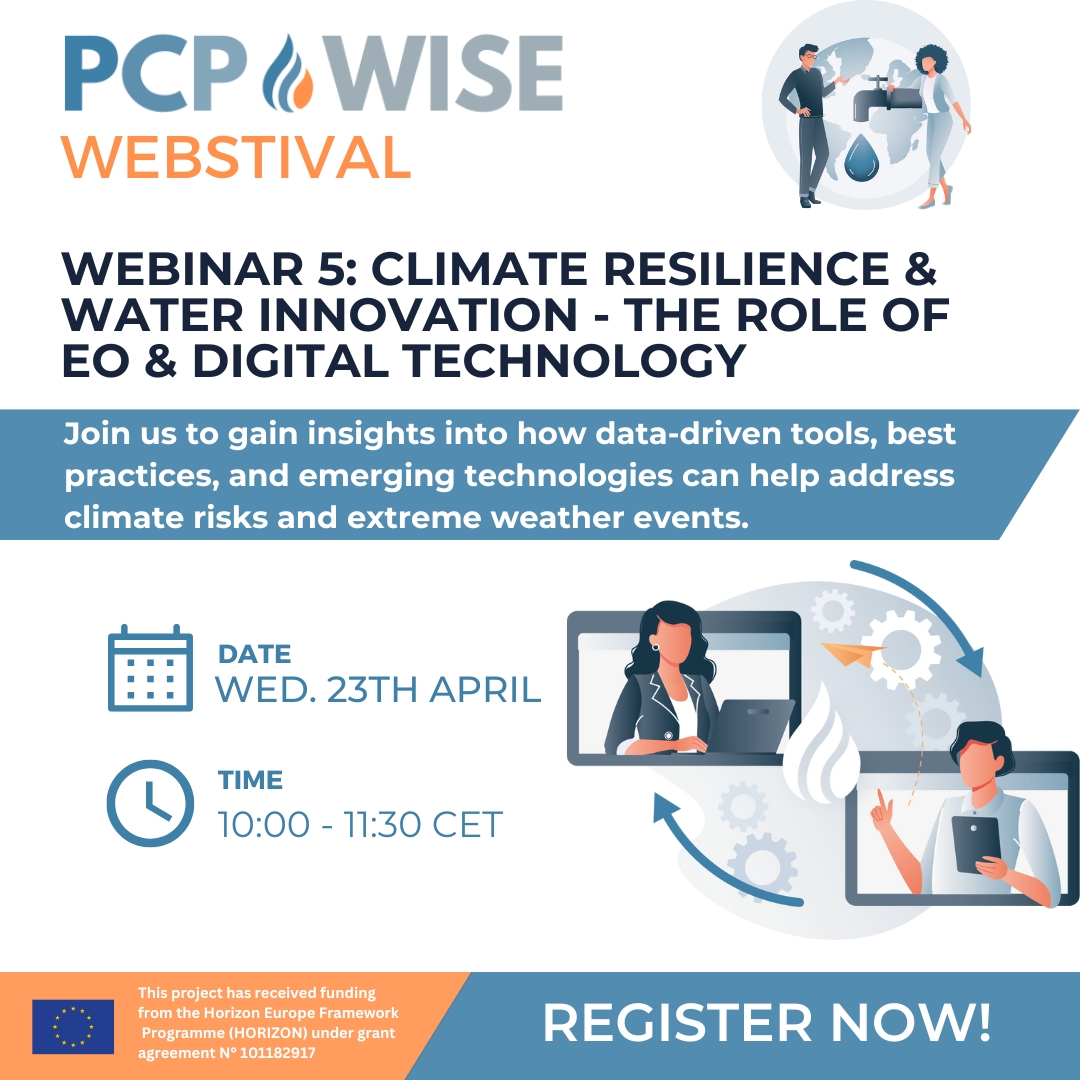As climate-related water challenges intensify across Europe, digital technologies and Earth Observation (EO) are stepping up as powerful enablers of regional resilience. The fifth webinar of the PCP WISE Webstival, held on April 23, 2025, explored how these tools are being harnessed to inform, guide, and accelerate climate adaptation in water systems.
Moderated by Rocío Beneyto Calvo (Barrabés), the session featured voices from innovation initiatives, research bodies, and EU-funded projects who offered practical perspectives on deploying EO and digital solutions to address water stress, floods, and droughts.
💬 “Technology must meet territory.”
Joost Buntsma (Het Waterschapshuis) kicked off the conversation by linking the day’s theme to PCP WISE’s upcoming Open Market Consultation. “We need solutions that don’t just look good on paper—they need to fit the real-world needs of public buyers and their local environments,” he stressed.
📍 From Pathways to Practice: Regional Climate Resilience
Laura Pando (EIT Climate-KIC) shared lessons from Pathways2Resilience, an initiative working with 100 regions across Europe. “Digital and EO technologies can help unlock tailored, place-based strategies,” she noted, “but we must anchor innovation in local knowledge and co-creation with communities.”
Hans van Leeuwen (STOWA) followed with a data-rich overview of how climate change is reshaping water availability in the Netherlands. “We’re facing more extremes—both drought and excess water. Resilience means adapting at multiple levels, from catchments to cities,” he explained.
🌿 Nature Meets Technology: A New Model for Adaptation
Ignacio Perez Silos (NBRACER) introduced the project’s framework for implementing nature-based solutions (NbS) alongside EO tools. “It’s not about choosing between tech or nature,” he argued. “It’s about designing systems where both work together—predicting, restoring, and protecting in real time.”
🛰️ EO in Action: The VALORADA Model
Cristóbal Reveco (GERICS) and Marc Tondriaux (TerraNIS) presented VALORADA, an ambitious effort to support place-based climate adaptation using EO. By integrating satellite data with socioeconomic indicators, the project offers regional authorities a clearer view of risks—and the tools to act.
“Our goal,” said Reveco, “is to make EO actionable—not just interesting maps, but information people can plan with.”
🧭 Navigating the Road Ahead
The session wrapped up with an interactive Q&A where attendees discussed scaling, standardisation, and integration with policy. The shared insight? EO and digital technologies are no longer just “add-ons”—they are becoming essential components of the European climate resilience toolkit.
The recording of the webinar is available here and webinar slides here



